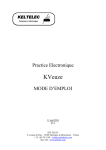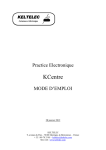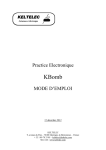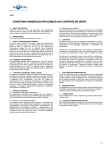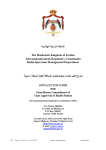Download User's Manual KPipes v2.1
Transcript
KELTELEC KPipes Electronic Practice Chanter USER’S MANUAL April 19th, 2010 3 First of all thank you for having purchased a KPipes Electronic Practice Chanter. All my congratulations for this good choice. Should you be a beginner or a confirmed piper KPipes will help you in mastering this difficult but so fascinating art of piping. I have had some great pleasure in designing KPipes and bringing a little bit of added value to the universe of piping. I wish you a lot of satisfaction and also to progress rapidly in mastering the bagpipe, this fantastic instrument. Michel LE PIMPEC 4 1. KPIPES GENERAL DESCRIPTION The KPipes Electronic Practice Chanter (EPC) in an electronic instrument used for training to the Great Highland Bagpipe (GHB). The GHB is a complex music instrument which must be mastered in different ways for obtaining a convenient result: holding the instrument, blowing the air, mastering the bag air pressure with the elbow, of course playing the melody with the fingers and even walking, etc. All these tasks must be simultaneously mastered. This is a challenge which requires a lot of work for obtaining an acceptable result. The KPipes EPC helps in mastering the fingering on the chanter with no need to have a fully set bagpipe. The KPipes EPC helps in exercising, learning new airs or discovering them with very few hardware and no sound trouble to the neighbourhood or to the family The KPipes EPC is a modern version of the Traditional Practice Chanter (TPC) but, thanks to the 21st century technology, closer to the bagpipe chanter features. For example the finger holes diameters are now the same on the KPipes EPC and on the bagpipe chanter. With respect with some physical laws this was not possible with the TPC. The result is that making the step from the practice chanter to the bagpipe is yet much easier that it was in the past. Moreover, with the KPipes EPC the sound is produced by electronic means and delivered to the piper and to the piper only through earphones or headphones. It becomes then possible to practice in a large number of places or situations (transportation, family, workplaces, public areas,…) without disturbing anybody. The sound output of the KPipes EPC may also be connected to various electronic devices (recorder, PC sound cards, amplifiers ,…). The fingers, when on the holes, are detected by some innovative capacitive electronic detection circuits. This detection is definitely independent of the fingers dryness or humidity. Moisture creams, quite useful with other EPCs are useless with the KPipes EPC. Three different modes depending from the piper preferences and from the situation can be used with the Kpipes EPC : • • • The “practice” mode : the KPipes EPC delivers a TPC sound The “chanter” mode : the KPipes EPC delivers a bagpipe chanter sound The “bagpipe” mode : the KPipes EPC delivers a bagpipe sound (with the drones) A very special feature of the KPipes is the possibility to replace the bagpipe chanter by a KPipes EPC in order to practice with one’s own fully set bagpipe but with no trouble to the neighbourhood or the family. In this configuration a KPipes adaptor is inserted between the KPipes EPC and the chanter stock and the drones are shut up. The sound is delivered on earphones or headphones but the bagpipe is quiet. The piper recovers the same feeling in this situation as with his bagpipe. The first reason is that the KPipes EPC which is replacing the bagpipe chanter has the same holes at the same place with the same diameters. But the important fact is that the KPipes adaptor is active, not passive. The adaptor has some trimming controls so the piper can setup his preferences for simulating a harder or softer bag pressure or stronger or softer reeds. A pressure sensor, located inside the adaptor, 5 permanently measures the air pressure inside the bag and delivers the result to the KPipes EPC electronics which accordingly enables or disables the synthesised chanter and drones sounds with reference to the piper preset preferences. Even the unwanted frequency modulation due an inconstant elbow pressure on the bag is reproduced. The KPipes adaptor will be available soon. For more information please have a look to our website: www.keltelec.com. 6 2. THE KPIPES EPC STRUCTURE The KPipes EPC is a tubular device comprising: - A high body [1] with eight holes [2] for the fingers. Each hole has a metallic contact inside, in the bottom. The contacts are touched by the fingers when they are on the holes. - A cap [3] which closes the high body top end and protects a connector used by the adaptor. This cap is removable. - A low body [4] with a rotating battery compartment [5] for one 1.5 volts AA type battery cell. - An ON/OFF switch [6], a mode selector (practice, chanter, bagpipe) [7], a trimming selector (pitch trimming, normal play, volume trimming) [8] - Two jack connectors: the first one [10] for connecting earphones, headphones, an amplifier, a PC sound card, etc…, the second one [9] for mixing an external signal (MP3 reader, metronome, etc…) 7 3. FIRST USE - Remove the KPipes EPC from its protection housing and make sure that no obvious damage occurred during the transportation. Otherwise complain to the transporters and inform Keltelec. Keep the protection housing for a possible future return to Keltelec. - Open the battery compartment by using the control [11]; - Check that the switch [6] which is on “O”. - Put the battery in place inside the compartment [5] with respect with the indications provided on the tag. The + pole must be downside. - Close the battery compartment by using the control [11]. - Plug earphones or headphones in the lower jack connector. The impedance of these earphones or headphones must be at least 16 ohms (e.g. 16, 24 or 32 ohms). Beware: at this point of setting the level of the sound delivered by the headphones or the earphones is unknown and may possibly cause some damage to your ears. So, make sure that the sound level is not too high before using the earphones or the headphones. - Place the selectors [7] and [8] in their middle position (Normal play and “chanter” mode) - Place the switch [6] on the “ I ” position to start the KPipes EPC. For this operation, one hand must hold the low body and also activate the switch. The other hand must hold the cap. During this operation the contacts must remain far from the fingers and from any part of your body or any conductor. - The KPipes EPC is initialised and ready to play. Place your fingers on the holes without forgetting the thumb on the higher hole and verify the correct behaviour of your instrument for example by playing a scale. - The KPipes EPC can be stopped by putting the switch|6] on the “O” position. 8 4. THE KPIPES PCE CONTROLS 4.1 Starting The KPipes EPC is started by putting the switch [6] on the « I » position, regardless of the other switches [7] and [8] position. It is important : a) To make sure that the sound level as delivered by any device connected to the sound output jack connector [10] is low enough to avoid any risk of ear damage. An excessive sound level can also be generated and delivered to the ouput jack connector [10] by external devices connected to the sound input jack connector [9] of the KPIpes EPC. b) To start the KPipes EPC by holding the low body in one hand and putting the switch [6] on the “ I “ position with the fingers of the same hand. Meanwhile the other hand must hold the cap. No finger, part of the body or conductive object must touch or be close to the contacts during the starting-up. This procedure is mandatory to allow the KPipes EPC to calibrate. Failure to do so will result in inoperative, too or not enough sensitive contacts. In that case, simply restart the KPipes EPC and respect the procedure. 9 4.2 Stopping To stop the KPipes EPC, just put the switch [6] on the « O » position. 4.3 Sleeping In order to save energy, the KPipes EPC enters a sleep mode after five minutes of inactivity. This sleep mode is not a full stop even if the power consumption is much reduced. Putting the switch [6] on the « O » position is the only way to fully stop the KPipes EPC. Awaking the KPipes EPC is done by fully stopping it and then restarting it. 4.4 Sound level controls Two independent sound controls are available on the KPipes PCE. One for the practice mode and the other one used for both chanter and bagpipe modes. The sound levels values resulting from using these controls are saved in the KPipes EPC memory, even in the lack of battery, and recovered when starting again the instrument. To use the sound level control : • Select the mode with the selector [7]: P for Practice, C for Chanter or B for Bagpipe (remember: same control for C and B). • Select the symbol with the selector [8]. Touch the D or E contacts with a finger, depending if you want to increase or decrease the sound level. A low A note is generated with a step by step amplitude variation. Stop touching the contacts when the desired sound level is obtained. An other way to control the sound level is simply to use earphones and headphones with an integrated volume control. This means is also appropriate and permits a quick setting of the sound level. 10 4.5 Frequencies controls (pitch) Two independent pitch controls are available on the KPipes PCE. One for the practice mode and the other one used for both chanter and bagpipe modes. The pitch levels values resulting from using these controls are saved in the KPipes EPC memory, even in the lack of battery, and recovered when starting the instrument. To use the pitch control: • Select the mode with the selector [7]: P for Practice, C for Chanter or B for Bagpipe (remember: same control for C and B). • Select the symbol with the selector [8]. Touch the D or E contacts with a finger, depending if you want to increase or decrease the pitch. A low A note is generated with a step by step frequency variation. Stop touching the contacts when the desired pitch is obtained. Touching the low G contact resets the pitch to the nominal values (440 Hz based). 4.6 Replacing the battery The KPipes EPC uses a single AA (or LR06) 1.5V battery or 1.2 V Ni-MH accumulators (same size). The use of this power source is optimized thanks to the use of both an efficient switching power supply and a sleeping mode mechanism. The end of life of a battery (or an empty accumulator) is recognized by the pitch decreasing lower and lower, followed by a lack of sound which can also be replaced by random noises. To replace the battery or the accumulator stop the KPipes EPC and open the battery compartment with the help of [11]. Remove the empty battery or accumulator by gently knocking the low end of the low body against the hand or a hard but non aggressive surface. Place a new battery or a full accumulator into the compartment and close it. 11 4.7 Connecting external devices to the sound input The KPipes EPC can accept external sounds on its jack connector [9]. These signals can come from various devices (e.g. MP3 readers, recorders, metronomes …). The input impedance is 27 kohms in stereo. Connecting mono devices needs the use of a mono to stereo adaptor between the external device and the KPipes EPC. 4.8 Connecting external devices to the sound output The KPipes EPC is designed to deliver a stereo sound to earphones or headphones through its jack connector [10]. The recommended impedance for these external devices is 16, 24 or 32 ohms taking into account that the higher is the impedance, the lower is the sound level. 8 ohms earphones or headphones are not recommended. They will not provide a higher sound level but with some distortion. It is strongly recommended to use good quality earphones or headphones. Low cost devices often have some unwanted resonance frequencies which generate spurious sounds for certain notes. A preliminary test before purchasing is very recommended. Earphones and headphones with their own integrated volume control are very handy and allow a quick volume setting. The maximum available power is 60 mW which is not enough to directly drive loudspeakers without the help of an intermediate amplifier. Amplified speakers may also be used. 12 5. USING THE KPIPES ELECTRONIC PRACTICE CHANTER (EPC) Using the KPipes EPC is very similar to playing the Traditional Practice Chanter (TPC)excepting that one do not blow in the KPipes EPC, the energy for producing the sound being provided by a battery. Should you be a beginner, please do not try to make your own way alone! Find a teacher, a pipe band or a bagpipe course to get all the appropriate advices. Should you be a confirmed piper, of course you know the TPC and you will immediately notice some differences with the KPipes EPC: • The first point is about holding the instrument. The TPC is hold between the mouth and a support (table, knee or chair). The fingers are free. They do not really hold the TPC. This relation with the mouth does not exist any more with the KPipes EPC. Therefore, the top of the practice is free and the fingers can be placed perpendicularly with the practice just like on the bagpipe chanter. It becomes even possible to look at your fingers while they are playing! Something which is quite difficult with a TPC. Maybe will you need a little bit of time to be comfortable with this new degree of freedom. But if you really need to work just like on a TPC, you are free to do so: a mouth adaptor which can replace the cap and permits to hold the KPIpes EPC with the lips just like a TPC is available. Please have a look to the chapter 7 for more details. • The holes diameter and their position are the same as on a bagpipe chanter. The finger contacts are not flush mounted to the practice chanter surface but at a small distance underneath. This is to provide a similar feeling as on the bagpipe chanter. This also means that the fingers must be accurately placed on the holes. • The fingers contacts of the KPipes EPC are touched or not. This is a binary behaviour. There is no intermediate state where the holes are more ore less covered. Therefore: - The transition between two successive notes is quite sharp and cannot be progressive. The KPipes EPC emphasizes the note to note spurious transition noises and helps to eliminate them. - Using adhesive tape for modifying a note is meaningless with the KPipes EPC. When using the practice or chanter modes (P or C), without the activation of the drones, not only the 9 standard bagpipe notes are generated but all the 256 obtainable sounds with 8 holes are taken into account. This means that : • The flat F and flat C notes are supported. • The KPipes EPC behaviour is much closer to the bagpipe chanter than to the TPC which means that false fingerings, very embarrassing when playing the bagpipe but difficult to hear with a TPC can now be corrected with the KPipes EPC when using the practice chanter mode The drones are tuned forever, by design. Once these little differences are understood and taken into account in your playing style, and the experience shows that it is a matter of a few days, it’ s up to you to play and to enjoy ! 13 6. CARE AND TROUBLESHOOTING 6.1 Care The KPipes EPC needs only to be cleaned from time to time with a dry or slightly wet tissue. Use cotton end ear sticks for cleaning the holes and the fingers contacts. Using house care products or solvents must be avoided. The KPipes EPC may become inoperative if it gets wet for example due to the rain. In that case, remove the cap and the battery, firmly but gently shake the KPipes EPC to remove all the water you can and put it in a dry and moderately hot place. Once dry, the KPipes EPC should work again. Otherwise, please contact Keltelec. 6.2 Troubleshooting Some minor incidents will certainly occur when using your instrument and specifically at the beginning. Hereafter is a list of the most frequent issues and their solutions: 1) No sound : • Switch [6] on « O » • No or empty battery (or accumulator) • Battery (or accumulator) mounted upside down (the battery may heat) • Unconnected output or output jack connector incorrectly plugged • Earphones or headphones plugged in the input jack connector 2) No other note than the high G : • The higher thumb is not on the higher hole. 3) A low A is generated when touching the D and E contacts. The other contacts are inactive. • The switch [8) is not in the middle position and is selecting a trimming mode. Just put it in the middle position if you want to play. 4) Some contacts are inoperative or generate inappropriate notes : • The KPipes EPC is not correctly initialised. Stop it and restart it. Strictly respect the initialisation procedure. • The KPipes EPC angular positioning is incorrect. The fingers plane must be perpendicular to the holes. • Humid atmospheric conditions. Please refer to the “Care” paragraph. 5) Lack of sensitivity for certain notes. Significant response time from touching the contact to generating the note. • May occur in case of varying atmospheric conditions or if the KPipes EPC is played for a long time. Just reinitialise the Kpipes EPC (stop and restart) • Your hands may also carry some excessive electrostatic charges. Eliminate them by touching something connected to the ground. You may also pass your hand on your thigh. Empirical but quite efficient ! 6) The frequency of the higher notes decreases. • The battery is empty. Replace it for a new one. 6.3 Permanent incidents or breakdowns If you cannot find the reason of a trouble with your KPipes EPC, please contact Keltelec. 14 7. USING THE MOUTH ADAPTOR If you have been practising for many years with a Traditional Practice Chanter you may experience some difficulties with the fact that the KPipes EPC does not require to be hold by the lips while playing. A solution is available with the “MOUTH ADAPTOTR” sold as an option and which can also be purchased separately. The mouth adaptor can be mounted on the top of the KPipes EPC and allows it to be hold with the lips just like a TPC but, of course, without blowing. For using the mouth adaptor just remove the cap by simply pulling it away and replace it by the mouth adaptor. 15 8. WARRANTY Worldwide, Keltelec warrant to the consumer that this « KPipes Electronic Practice Chanter » will be free from material defects and manufacturing flaws for a period of one (1) year from the delivery date. Should the product appear to be defective during the warranty period, immediately contact Keltelec which will indicate the procedure to follow. If the defect is confirmed, the product must be returned to Keltelec. Within the context of this warranty, the consumer’s defective product will, at Keltelec’s choice, be either repaired or replaced. Where authorized by applicable law, the full liability of Keltelec (including for the indirect damages) is limited to the repair or replacement of the KPipes PCE product. The consumer’s legal rights with respect to legislation applicable to the sale of consumer goods are not affected by this warranty. 16 9. RESTRICTIONS FOR USE, WARRANTY AND RESPONSIBILITY LIMITATIONS • The KPipes EPC must only be used within the limits of its normal purposes: learning the bagpipe music, bagpipe training and practising, street, indoor or scenic playing. Keltelec will not carry any responsibility and will cancel the warranty for any other use. • The KPipes EPC must not be used under excessive climatic and/or environmental conditions. In particular, applying high temperatures, condensing humidity, fog, water in vapour phase, snow, rain or mud directly to the KPipes EPC or immersing it in any liquid may result in an unpredictable behaviour of the Kpipes EPC and/or may cause some permanent damages to the instrument. Keltelec will not carry any responsibility and will cancel the warranty for using Kpipes under these conditions. • Should the KPipes EPC being unused for several weeks, the battery or the accumulator must be removed to avoid any damage possibly resulting from liquid acid leakages. These damages are not taken in charge by the warranty. • The KPipes EPC cannot be repaired by the user of by a third party. Only Keltelec is authorized to open and repair the instrument. Removing or damaging the warranty seal leads to the warranty cancellation. • The Kpipes EPC must not be used in the proximity of electromagnetic fields sensitive installations (e.g. measurement instruments, medical or nuclear equipment) or when using electronic equipment is forbidden (e.g. aircraft taking off and landing). • The KPipes EPC must not be used when a risk of interfering with other tasks exists. In particular the KPipes EPC must not be used while operating a machine or driving. 17 10. REEXPORTATION RESTRICTIONS Some parts in the KPIpes EPC are submitted to some re-exportation restrictions by the United States of America. Therefore the KPipes EPC re-exportation to the following countries is forbidden: Iran, Cuba, Sudan, Congo, Syria, North Korea and Burma. 18 APPENDIX A : KPIPES EPC MAIN FEATURES • Exact replica of the bagpipe chanter : same dimensions, same holes diameters • Fingers detection by brushed stainless steel contacts associated with innovative capacitive detection circuits. No counter-electrode, no influence of the fingers humidity of dryness. • Practice chanter sounds or bagpipe sounds with or without drones. • Trimming: sound level and pitch. Normal play in Low A but can be adjusted from Low G to B. • Direct sound output through an audio stereo jack (3.5 mm) • Use of earphones or headphones (impedance : 16, 24 or 32 ohms) • Possible connection of the sound output to amplifiers, PC sound card, recorders, etc • Sound input through an input audio stereo jack (3.5mm) for mixing the KPipes EPC sound with external devices (electronic metronomes, recorders, MP3 readers, etc) Input impedance : 27 kohms • Power supply by a 1.5V AA size battery or a Ni-MH accumulator • Sleeping mode after 5 minutes of inactivity 19 APPENDIX B : ENVIRONNEMENTAL PROTECTION The KPipes EPC is compliant with the current international Laws and Regulation: • This device does not incorporate any product forbidden by the RoHS directive. In particular it does not incorporate lead. • The CE mark as drawn on the device means that it complies with the EMC (2004/108/CE) Directive and with the (93/68/CE) CE marking Directive. • At the end of its working life this device and the used batteries and accumulators should not be disposed of with standard household waste, but rather dropped off at a collection point for the disposal of Waste Electrical and Electronical Equipment (WEEE) for recycling. This is confirmed by the symbol found on the product. Depending on their characteristics, the materials may be recycled. Through recycling and other forms of processing Waste Electrical and Electronical Equipment, you can make a significant contribution towards helping to protect the environment. Please contact your local authorities for information on the collection point nearest you.























